Friday, December 10, 2010
You Can Safely Ignore This Technorati Claim Post
Sunday, December 5, 2010
Loopy DVD Menu Videos
In the case of my video the calculated length was about 0.2 second longer than the actual video and this seemed to cause problems during playback. The solution was to set the actual length of the video manually. The actual length of the video can be found in the lower right of the Timeline pane, however the length is shown in seconds and frames. This not entirely helpful because the time to be entered in Length must be in minutes, seconds, and milliseconds. To get the time make sure that the media timeline pane is showing; from the menu select View - Timeline. In the time bar above the video right-click and select Time and Frames.
Zoom in on the timeline so that a hash mark appears for each frame, now click to place the cursor at the last frame you want to show which is probably the last frame. Now right click the timeline bar again and select Time. The length of the video is shown on the left side of the pane right above the video.
Return to the menu properties and click on Auto calculate and a list appears; choose Specify. Now the video time determined above should be copied to the Length value.
Preview the menu and you should find that it loops seamlessly from the end of the video back to the beginning. I don't understand why the estimated length doesn't match the actual length, guesses include: slight discrepancies between the audio and the video (i.e. the audio track is longer), the data used to calculate the length is bad or the calculation formula is wrong. In any case it seems easy enough to correct to create professional looking menus with video backgrounds. I learned a few other interesting possibilities during this exercise. One is that the loop point defines the beginning of the loop, this is how some menu videos have an introductory part that is only shown once along with a location to start loop playback so that there is a seamless loop. Another possibility is that when navigating from menu to menu a "transition video" can be inserted between them. When a viewer selects a button, instead of navigating immediately to the next menu the link connects to a video that has been placed at the root of the DVD file structure. The End Action of the transition video then links to the menu to be displayed. This is a fairly common technique I have seen on several of the more highly produced DVDs.
Saturday, November 20, 2010
Simple Secure Email
Next download Mozilla Thunderbird Portable from PortableApps.com. Plug the flash drive into your computer and follow the installation instructions. Launch Thunderbird. It will prompt you for information about your email account.
It is most secure to uncheck "Remember password" but it is much more convenient to leave it checked. Remember that if you lose the flash drive anyone who finds it can use it to access your email account. Click the "Continue" button and the application will get the setup information for GMail. Click "Create Account" and Thunderbird will start and connect to your account.
The final step is to install Enigmail. PortableApps has provided a very simple install procedure and links to the software that is needed. Once Enigmail is added to Thunderbird you will need to setup encryption. Select "OpenPGP" then "Setup Wizard" in Thunderbird Portable. Follow the instructions, unless you know otherwise use the default values. To allow people to easily send you encrypted email you should allow your public key to be placed on a key server. If someone wants to send you email (or you want to send email to someone) the key server can be queried to see if a public key is available for an email address.
Create email normally, the first time a message is sent to a particular email address you will be prompted to select the public key of the email recipient. The outgoing message will be encrypted using the recipient's public key. If the recipient doesn't have a public key then the message cannot be encrypted and will be sent in plain text. When you receive an encrypted message you will be asked to enter your passphrase (created using the OpenPGP Setup Wizard) and the message will be decrypted and displayed.
Remember that wherever you store the private key created during the Setup Wizard must be kept safe. If someone gains access to the flash drive with Thunderbird Portable they can get your private key, and with it your encrypted email can be read.
In summary:
- Create a GMail account.
- Enable IMAP for the GMail account.
- Install Thunderbird Portable on a flash drive.
- Install OpenPGP and Enigmail on Thunderbird Portable.
- Create a public / private key pair and share the public key on a keyserver.
Wednesday, November 10, 2010
Of Photo and Video Aspect Ratios (Surviving Vegas Movie Studio 10)
Have you noticed that your photos, especially portrait oriented photos, are missing a lot of the picture? Have you thought about the aspect ratio of your output video? Vegas adds photos to a video track in a "crop to fill" manner, that means it will try to fill the output video frame with image data, even if a photo needs to be cropped to do so. For example this photo of three girls has a 3:2 aspect ratio. If it is placed into a Vegas project that has the "NTSC DV Widescreen" template set it will be cropped on the top and bottom to fit the 16:9 aspect ratio.
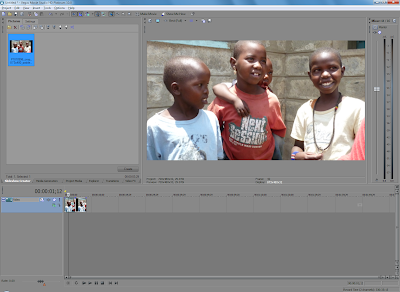
3:2 aspect ratio photo added to a widescreen DVD project, the photo is cropped at the top and bottom
The screen capture below of the pan and crop tool shows how the original photo has been cropped. The tool can be used to manually "zoom out" and remove the cropping, but if there are a large number of photos in the slideshow doing that takes a long time.
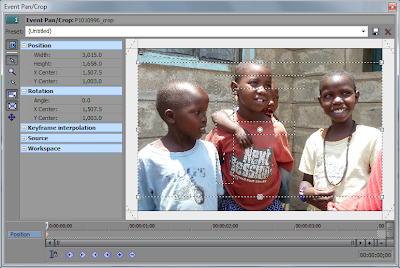
3:2 aspect ratio photo cropped to widescreen DVD project shown in the pan and crop tool, dotted lines show the photo cropped at the top and bottom
The solution is to pad the images before importing them using the Slideshow Creator. When the photos are padded so that the resulting images have the same aspect ratio as the output video frame they will not be cropped. My personal preference is also to resize the images so that they have the same dimensions as the output video frame. This is all straight forward unless the images will be used in a widescreen DVD video. The frames of a widescreen DVD video have the dimensions 720x480 pixels, however the widescreen format is anamorphic, and the image displayed on screen will have the dimensions 873x480. So when padding photos for a widescreen DVD the dimensions of the padded image are 873x480.
Photos can be padded and resized using any number of image editing tools. Irfanview can be used to resize the images, then in its Thumbnail viewer index prints can be created with one photo per page, no borders or image information, with the page size set to the dimensions of the output video frame. It's also possible to choose the color that will be used to pad the photos. Other applications can also be used to create the padded images including the use of Actions in Photoshop or scripts in Gimp. Once the images are padded they can be used as input to the slide-show.
The pan and crop tool shows that the image is no longer cropped.
Of course whether your images are cropped or have padding is a personal preference. If you don't mind losing image data then accept the default crop or use the pan and crop tool to select the part of the photo that should be visible. However there is a glitch if you are going to output your video in different formats, like widescreen DVD and Blu-Ray. The aspect ratio of whichever Template is set on the project when the slideshow is created will be used to crop the photos when the Template is changed. The images below show the original photo added to a project with the "NTSC DV Widescreen" Template selected. Then the project template was changed to "HDV 720-30p". Now the photo is cropped at the top and bottom and padded at the top and bottom, this is the worst possible outcome.
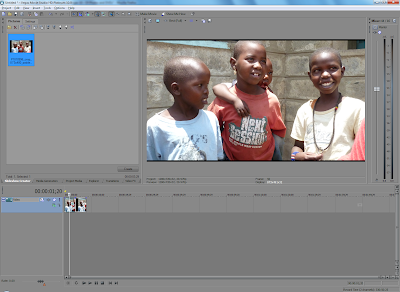
Photo added to widescreen DVD project, then project changed to HD 720. Top and bottom of the photo are now cropped and padded
The pan and crop window shows what has happened, the frame being used to crop the photo has the widescreen DVD aspect ratio, the HD aspect ratio is not the same, so now the photo is cropped, then padded. The frame aspect ratio can be reset to the HD aspect ratio using the "Preset" list at the top of the window.
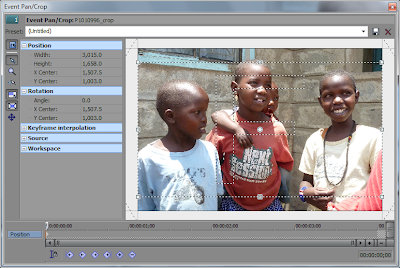
Photo added to widescreen DVD project, then project changed to HD 720. Top and bottom of the photo are now cropped and padded
The photo padded for widescreen DVD now has padding on all sides.
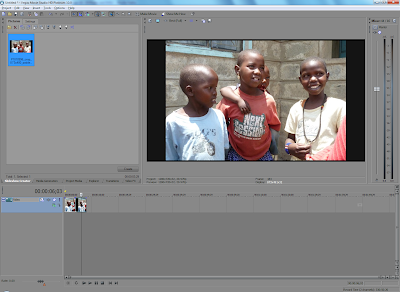
Photo padded for a widescreen DVD project has had the project changed to HD 720. All sides of the photo are now padded
So when creating a slideshow where it is desirable to see the whole photo the best practices are: resize the photos to fit into the output video frame, if necessary pad the photos so that they have the same dimensions as the output video frame, create image files from the photos that match the output video frame size (i.e. don't use images created for a Blu-Ray slide show in a widescreen DVD slideshow).
But there is still so much more about slideshows to discuss, like markers, color correction, and pan and crop; those will all have to wait for a future post.










